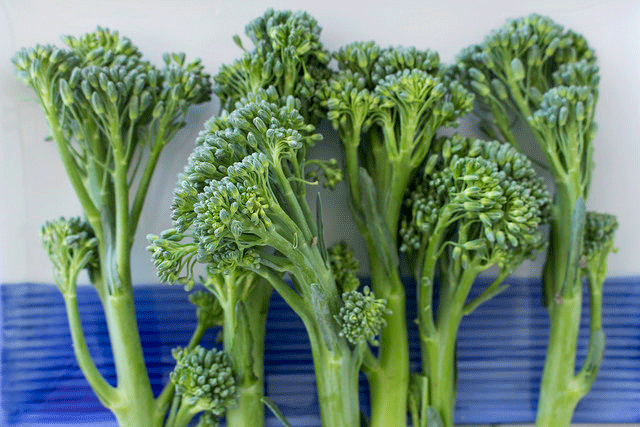Pot and cut the others off at ground level with scissors. At this point, the growing temperature can be cooler (60°F/16°C). Use a small fan to maintain good air circulation and promote stocky stem growth.
Transplant to the garden about 60 days before you expect to harvest, when the seedlings have several sets of leaves. Space plants on 12-inch (30.5 cm) centers in raised beds. When the plants are a foot tall, sprinkle a tablespoon of balanced organic fertilizer around the base of each one. Apply a deep mulch of compost or other organic material to protect the shallow roots from heat and to conserve moisture. Irrigate as needed to keep the soil evenly moist but not soggy. Fall crops should be started about three months before the first hard freeze. With broccoli, timing is everything.
Cultivation
Infestation by the cabbage butterfly (Pieris rapae) is a serious problem where the pest occurs. Apply a dust containing Bacillus thuringiensis (Bt) at transplanting and then weekly thereafter. Reapply after a hard rain. Control aphids with regular sprayings of insecticidal soap. Apply neem oil or pyrethrum dust if you see flea beetle damage. Trap slugs and snails or install a copper barrier, and shield the lower 2 inches (5 cm) of the stem of new transplants with a strip of paper or aluminum foil to thwart cutworms.
Harvesting
Cut broccoli when the head is tight, dark green and without a trace of yellow. After the main head is removed, most varieties will produce small side shoots. Each well-grown plant should produce 2 to 4 pounds (.9 to 1.8 kg) of broccoli.
Freshly harvested broccoli keeps a week under refrigeration. It also freezes well.


